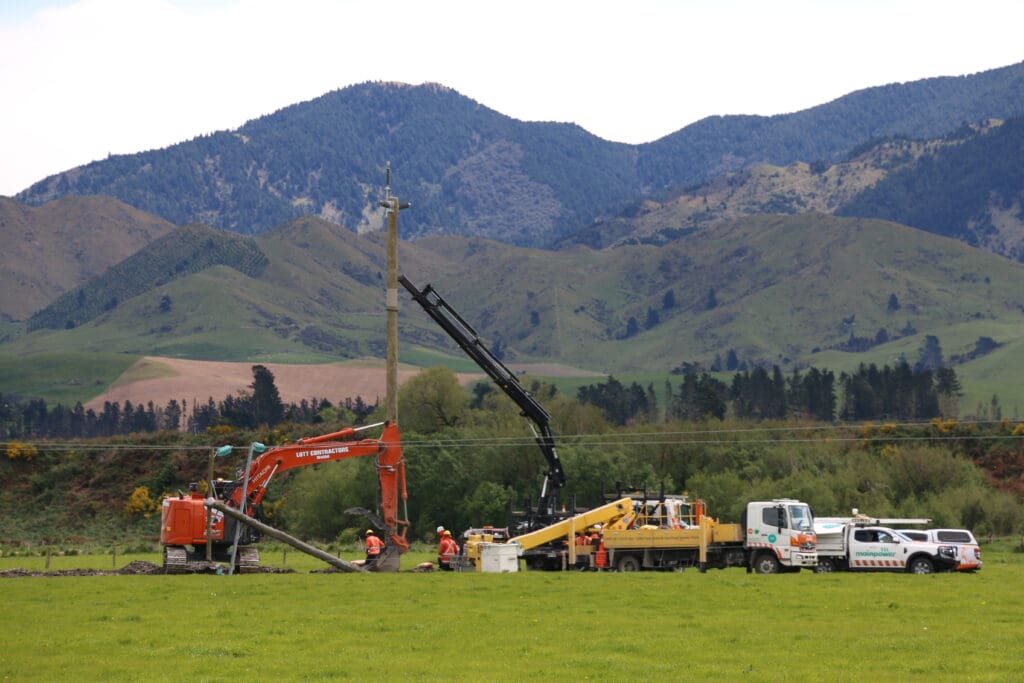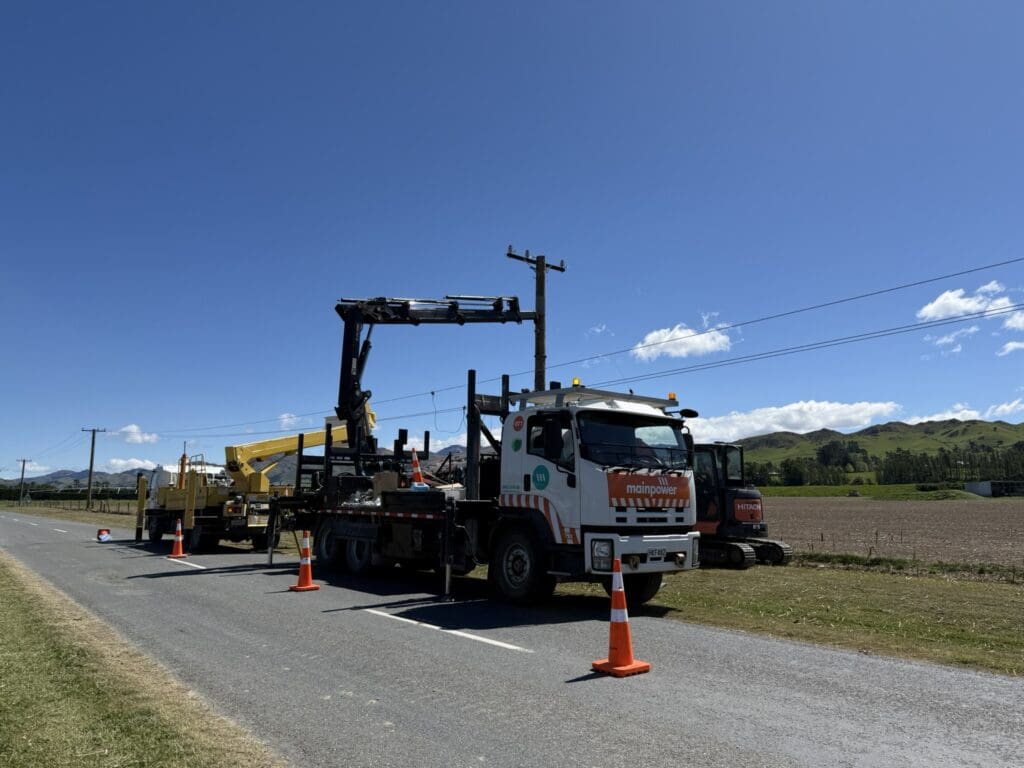02 October 2025
As spring growth kicks into high gear across North Canterbury, MainPower is reminding property owners – especially those with shelterbelts near power lines – that now is the time to get trimming.
The last few years have created unprecedented growth in trees due wetter winters and longer summers. These factors create a perfect storm for vegetation-related outages and increased risks of fire.
While farmers tend to be proactive, booking contractors annually, residential rural customers often get caught out.
“We’re seeing trees grow faster than ever before,” Ed Laity, Vegetation Programme Manager at MainPower says. He says pine, willow, eucalyptus and poplar trees are key culprits.
“Some poplars even put on four metres in a season. That’s a huge amount of growth that needs to be managed to ensure the safety of our lines.”
A standard contractor costs anywhere between $200–$500 per hour. The rate generally depends on the contractor and their procedures.
“Many contractors will organise their own Traffic Management as required, while others are trained in compliant temporary traffic management systems which will likely be cheaper than using MainPower,” Mr Laity says.
Most shelters can be trimmed under a Close Approach Consent, which the contractor must obtain from MainPower before they undertake the work. They get this at no cost to them or their customers.
“We’re not the police. If customers respond to our notices on time, they will save themselves some money. But if they don’t respond to our notices, the works still needs to be done, and when our teams need to do the work at this stage, the customer winds up being charged at full cost,” Mr Laity says.
MainPower must charge a flat rate of $500 per hour to cover the cost of both the preferred trimming contractor (Fulton Hogan) and a MainPower supervisor. Due to MainPower’s Health & Safety policy, outsourced Traffic Management is required with a maximum charge of $1500 to the customer.
“We try to use the same traffic management for multiple jobs on the same day, at which point the customer will only pay for their apportioned amount, but this is not a guarantee.”
Leaving things until the last minute usually means spending up to $2,000 on isolation costs. If a customer has allowed their shelter to get so close to the power lines that the contractor’s machine cannot trim it safely without the power being turned off for the duration of the trim, the power needs to be turned off for the duration of the work.
And sometimes a trim may not be enough.
Many customers opt for a light trim, removing only the “fluffy stuff” of the shelter belt. This lets the “big wood” in the centre of the hedge to grow taller, thicker, older and more unruly each year, eventually breaching clearance zones.
“We’re just making future work unless someone cuts the shelterbelt right down,” Laity says.
“Height reductions are more effective long-term, with some contractors not needing to come back for two years. Height reductions require heavier equipment and cost more upfront, but it definitely pays off in the long run.”
Timing is everything when it comes to trimming. Despite recent weather, winter seems to be behind us, and spring and summer are the ideal trimming seasons.
“At the moment, contractor availability is currently in the resident’s favour, and there’s two whole seasons to deal with it.”
MainPower encourages customers to book contractors early and establish annual trim cycles if required. This keeps notice letters at bay, helps avoid reactive work and ensures compliance with regulations.
MainPower’s vegetation team sends out notices when trees breach clearance zones. If customers respond with a plan, the company works with them, and they generally save money on the work. If there’s no communication, MainPower and Fulton Hogan crews are dispatched and full costs apply.
MainPower crews work in all conditions, and autumn can suit the work if the weather has been dry, but wet ground can make trimming impossible without causing damage. If customers wait until winter, they risk not only property damage and higher costs but also further delay.
“We’re here to help,” Mr Laity says, “but we need customers to take ownership. It’s their trees, their responsibility. Please don’t wait until winter and run the risk of damage and high cost.”


